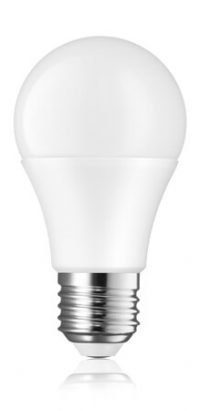Home Smart Home
It’s time to wake up for school. Music videos begin to play on your television screen. Your bedroom lights come on gradually, the curtains slide open to welcome the daylight, and a soft voice urges you out of dreamland. No need for an alarm clock to jolt you from bed, you’re gently awakened by an integrated home automation system!
You hurry to the bathroom, where the lights come on as soon as you enter. The tile floor has been pre-warmed for your arrival. When you finish showering, you dry off with automatically pre-heated towels.
 In the kitchen, your little brother says you’re out of milk, so you check your refrigerator to make sure. You don’t open the fridge—instead, you use a computer on the door to check its contents. At the push of a button, your refrigerator system automatically reorders milk via the Internet. And when you’re ready for breakfast, a robotic kitchen arm prepares it for you—and cleans up after itself, too.
In the kitchen, your little brother says you’re out of milk, so you check your refrigerator to make sure. You don’t open the fridge—instead, you use a computer on the door to check its contents. At the push of a button, your refrigerator system automatically reorders milk via the Internet. And when you’re ready for breakfast, a robotic kitchen arm prepares it for you—and cleans up after itself, too.
Once found only in luxury homes, “smart home” conveniences like these are fast becoming more commonplace. Smart homes rely on artificial intelligence, robotics and the Internet to operate lighting, heating, cooling, ventilation, entertainment and security systems automatically. They also learn about occupants and anticipate their needs.
Smart homes not only make home life more fun and comfortable, but enhance safety as well. For example, smart outlets provide electricity only upon request by a qualified appliance. If the computer system determines that all is well, it sends power to that outlet. If the network senses potential danger, such as a frayed cord, overloaded outlet, or short circuit, the system will deny power to the outlet, thus averting a shock and fire hazard.
Within a decade, most homes will likely have some or all of these smart technologies. In the meantime, you’ll just have to rely on that alarm clock to help you get up in the morning.
Do the Safe Thing
Home Safe Home
 Do a simple inspection inside your home to keep yourself and your family safe. Look for these hazards:
Do a simple inspection inside your home to keep yourself and your family safe. Look for these hazards:
- Overloaded outlets
- Worn or frayed power cords
- Power cords running under rugs or furniture legs
- Appliances used near water without GFCI protection
- Circuit breakers that trip or fuses that blow often
- Electric or gas heaters close to anything that can burn
- Flammable liquids or other materials stored close to gas appliances
- Kids playing near natural gas appliances or connector pipes
Remind your family to have natural gas-burning equipment and ventilation inspected by a qualified professional every year, preferably before the start of each heating season.

Paying for Power
Your local utility company sends your household a bill for the electricity and/or natural gas you use.
For electricity, you pay for the kilowatt-hours (kWh) used in your home during the billing period. What is a kWh? It is equal to 1,000 watts of electricity used for one hour. If you leave fifty 20-watt light bulbs on for an hour, you’ve used one kWh of electricity.
For natural gas, you pay for the therms you’ve used during the billing period. What is a therm? It is the number of cubic feet (cu. ft.) of natural gas used, multiplied by a
therm factor. The therm factor is based on the energy content of the gas, which can
vary. Some utilities  simply assume an average therm factor.
simply assume an average therm factor.
Advanced Science Concept
Fantastic Facts
- How many miles of electric transmission lines are there in the United States? The Edison Electric Institute reports there are about 240,000 miles of high-voltage transmission lines in the United States.
- How many miles of natural gas pipelines are there in the United States?About 3 million miles of underground pipelines deliver natural gas in the US across the five following sectors, listed in order of greatest to least percentage: electric power generation, industry, residential, commercial, and transportation.
(Source: U.S. Energy Information Administration)



 Building codes are a set of laws regulating the construction, alteration, and repair of buildings and the systems they contain. Codes set minimum standards for construction methods and materials. In doing so, they ensure the safety of a structure for both its current and future occupants. A building’s electrical system must adhere to local electrical codes, which are based on the National Electrical Code (NEC), published by the National Fire Protection Association (NFPA).
Building codes are a set of laws regulating the construction, alteration, and repair of buildings and the systems they contain. Codes set minimum standards for construction methods and materials. In doing so, they ensure the safety of a structure for both its current and future occupants. A building’s electrical system must adhere to local electrical codes, which are based on the National Electrical Code (NEC), published by the National Fire Protection Association (NFPA).